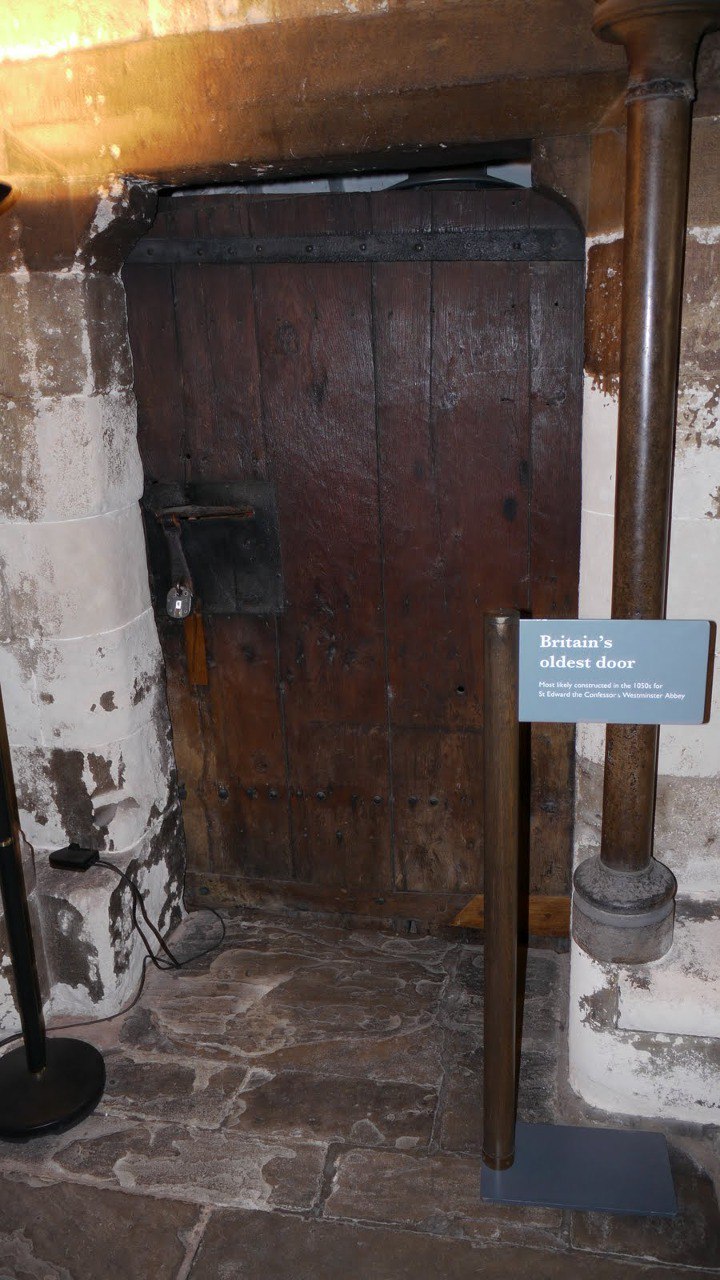Doors are an integral part of a building, and have been made commonly of wood or metal in the past. As an organic material, wood is highly susceptible to deterioration. Nevertheless, in some instances, the wooden doors of ancient buildings have survived through the ages. One such door is an oak door at Westminster Abbey, which has been dubbed as ‘Britain’s oldest door’. There’s a gruesome side to this door’s story too – The decoding of England’s oldest door, covered in human skin.
The decoding of England’s oldest door
The oak door is thought to date from the 1050’s and was made for the Saxon King Edward the Confessor, the founder of Westminster Abbey. Animal hide has been found on the door and there was a legend that the skin on the door was human in origin, a theory found to be false by modern archaeologists.
Britain’s oldest door is thought to have been made from a tree that grew in Essex and has five panels and is 6 foot 5 inches high and 4 feet wide.
Dendrochronology and Britain’s Oldest Door
The abbey’s cloisters and the outer vestibule of the chapter house are separated by a simple wooden door. In 2005, the first archaeological study and scientific dating of the door was carried out. The latter employed a technique known as dendrochronology, and the dating of the door was conducted by Daniel Miles and Dr. Martin Bridge of Oxford Dendrochronology Laboratory.

As tree rings represent the growth of a tree from year to year, they may be used to determine its age, and consequently the age of objects made with its wood. In the case of the door in Westminster Abbey, it was made using five vertical oak planks that are held together by three horizontal battens, or ledges, and iron straps. The planks were found to have originated from a single tree, and the tree rings observed on them show a growth period from 924 AD to 1030 AD. Unfortunately, the exact date of the tree being felled cannot be determined, as the bark and some of the sapwood had been trimmed away when the door was being made. Nevertheless, it has been estimated that the tree was felled between 1032 AD and 1064 AD, and that the door was made during the 1050s.

Another Anglo Saxon Door
Although the oak door at Westminster Abbey is claimed to be the only surviving Anglo-Saxon door in the UK, it may not indeed be the case. In Hadstock, a village in Essex, there is a church (the church of St Botolph) dating to the late Saxon period. One of the church’s famous aspects is its north door, which is believed to have been made between the mid-11th and early 12th century AD. The tree rings on the board shows a period of growth from 663 to 1022 AD, and the tree is estimated to have been felled after 1034 AD, probably between 1040 AD and 1070 AD.
Zurich’s is One of the Oldest Doors in Europe
Whilst these two doors date to the 11th century AD, and are the oldest in Britain, they are far from being the oldest in Europe. In 2010, archaeologists in Zurich, Switzerland, unearthed a wooden door dating to the Neolithic period. The door was discovered during the construction of what was planned to be the new underground carpark for the city’s opera house. Using dendrochronology, it was established that the door was towards the end of the 4th millennium BC, making it one of the oldest in Europe.

The traces of at least five Neolithic villages have been discovered at the site and the door would have been part of a wooden stilt house in such a village. Due to the harsh climate of the area, the door was designed to keep out the cold winds blowing across Lake Zurich and archaeologists believed that it did its job perfectly. Unlike the wooden doors in Britain, the Swiss door is much more fragile now and once removed from the ground, it had to be soaked in a special solution to prevent the wood from disintegrating.


